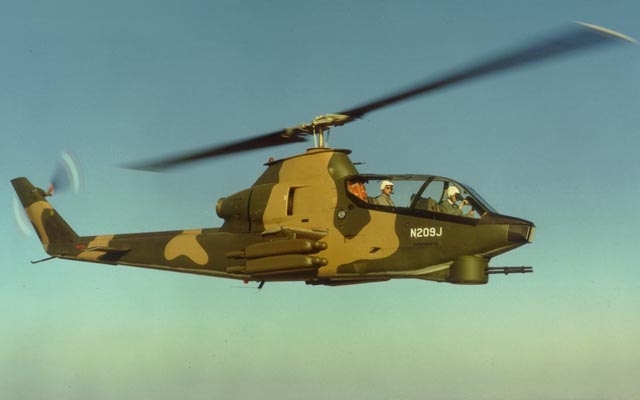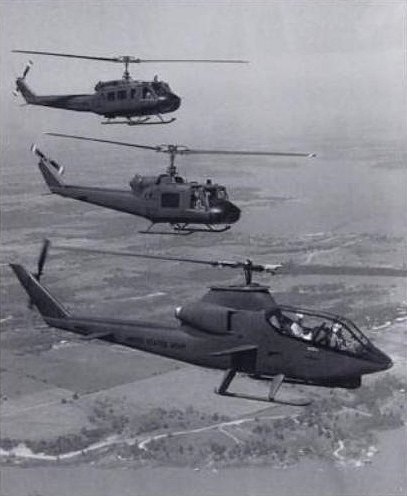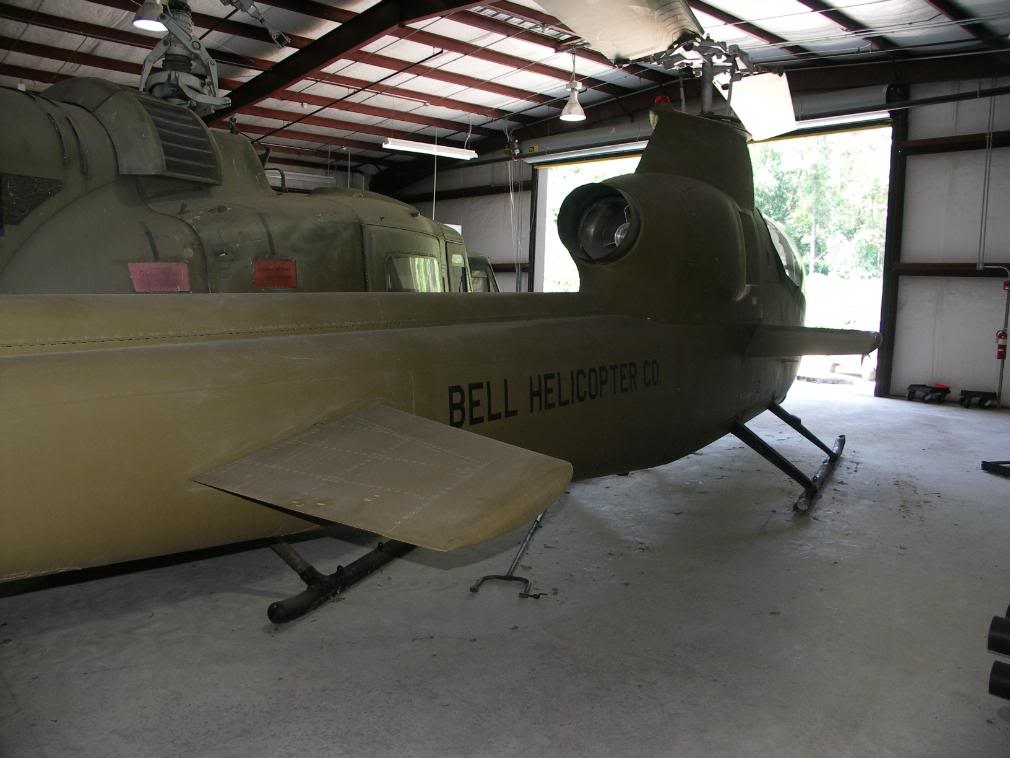|
Bell 209 prototype of the AH-1 Cobra series, with skids retracted (N209J)
The Bell 209 in formation with a UH-1B (Model 204) and UH-1D (Model 205).
The Bell 209 demonstrator prototype is now preserved at the Patton Museum. |
Model 209 Info: attack helicopter for U.S. Army Powerplant: 1 x Lycoming T53 turboshaft engine Significant date: 7 September 1965 (first flight) Despite the Army's preference for the AAFSS – for which Bell Helicopter was not selected to compete – Bell stuck with their own idea of a smaller and lighter gunship. In January 1965 the company invested $1 million to proceed with a new design. Mating the proven transmission, the "540" rotor system of the UH-1C augmented by a Stability Control Augmentation System (SCAS), and the T53 turboshaft engine of the UH-1 with the design philosophy of the Sioux Scout, Bell produced the Model 209. Bell's Model 209, which largely resembled the D-262 mockup. In Vietnam, events were also advancing in favor of the Model 209. Attacks on US forces were increasing, and by the end of June 1965 there were already 50,000 US ground troops in Vietnam. 1965 was also the deadline for AAFSS selection, but the program would become stuck in technical difficulties and political bickering. The U.S. Army needed an interim gunship for Vietnam and it asked five companies to provide a quick solution. Submissions came in for armed variants of the Boeing-Vertol ACH-47A, Kaman HH-2C Tomahawk, Piasecki 16H Pathfinder, Sikorsky S-61, and the Bell 209. On 3 September 1965 Bell rolled out the prototype, and four days later it made its maiden flight, only eight months after the go-ahead. In October, it set a world helicopter speed record for its class of 320 kph (200 mph). The Army conducted a flyoff competition for the interim gunship in November 1965. The Model 209 had such a jump on the other submissions that in hindsight its selection was almost obvious, though the Army did experiment with the Chinook gunship in Vietnam. The Army placed a contract with Bell for two prototypes of an operational version of the Model 209 on 7 April 1966, followed by a production contract for 110 of the gunships on 13 April. Traditionally, the Army named their aircraft after American native tribes, such as "Mohawk", "Iroquois", "Sioux", "Cheyenne", and so on, but the service was engaged at the time in an odd exercise in litigation with Piper Aircraft, which also used tribal names for their aircraft. This permitted a break with tradition. Bell added Cobra to the UH-1's Huey nickname to produce its Huey Cobra name for the 209. The production version of the Model 209 was originally designated "UH-1H", in keeping with the fiction that the gunship was just a "modified UH-1". However, in July 1966, the designation was changed to "AH-1", similar enough to the UH-1 designation to keep up the pretense. The Army applied the Cobra name to its AH-1G designation for the helicopter. The Bell 209 demonstrator was used for the next six years to test weapons and fit of equipment. It had been modified to the match AH-1 production standard by the early 1970s. It was restored to an approximation of its original form when it was retired, to be placed on display at the Patton Museum at Fort Knox, Kentucky. There are also some rumors that a second Model 209 demonstrator was built, but if so the details are very unclear. Population: 1 [N209J] (a second prototype is rumored) Specs: Crew/passengers: 2
|
This website is conceived,
designed and maintained by BIS © 2006-2010 BIS Productions
Although every effort is made to make the information accurate, a mistake is
always possible.
Feel free to send an e-mail to correct or update any page of this site.






